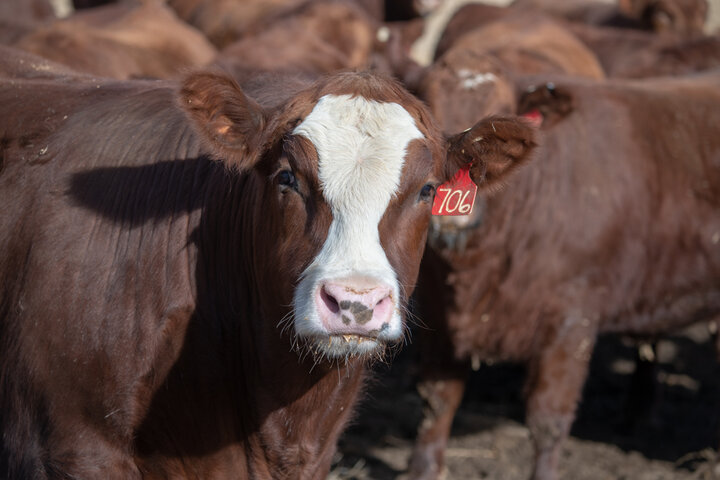The use of shades in feedlots has made a big difference in the effects of heat on fat cattle, but a few other strategies can help keep cattle cool, enabling cattle to keep gaining, even in the dog days of summer.
Cattle nearing the end of their feeding period should be given priority when deploying heat abatement strategies. Extra space for cattle to access water should be added to all pens, but particularly to those of cattle near harvest. The issue is not water supply, it is water access. Cattle behavior changes to promote cooling off—boss cattle remain at the water tank longer than necessary to drink, simply playing with water or enjoying a cooler microclimate.
Managing intake may require that bunk readers hold off on calling for additional feed. Also, some nutritionists may switch the feedlot to “cooler” diets (diets with more roughage). Use of bedding on strategic locations may help to reduce heat absorption from the pen surface.
Under emergency conditions a watering trough slip-in can be built where water tankers can deliver water in the feed bunk. Cap the ends of 20-foot culvert pipe sections (12- to 18-inch in diameter to fit at the bottom of a feeding bunk) before cutting lengthwise to produce two identical size troughs. Burn the edges with a flame torch to smooth sharp edges resulting from the cut. This results in a trough that can be slipped to the bottom of the feed bunk. A single 20-foot section should add at least five watering spaces and 130 gallons to the watering tanks in the pen. Keeping these slips full of water should ease the pressure on watering tanks during hot and still days.
Interviews with the authors of BeefWatch newsletter articles become available throughout the month of publication and are accessible at https://go.unl.edu/podcast. You can subscribe to the BeefWatch newsletter here: http://go.unl.edu/Beefwatch_subscribe
Topics covered:
Backgrounding/stocker/yearling, Feedlot, Backgrounding & feedlot

